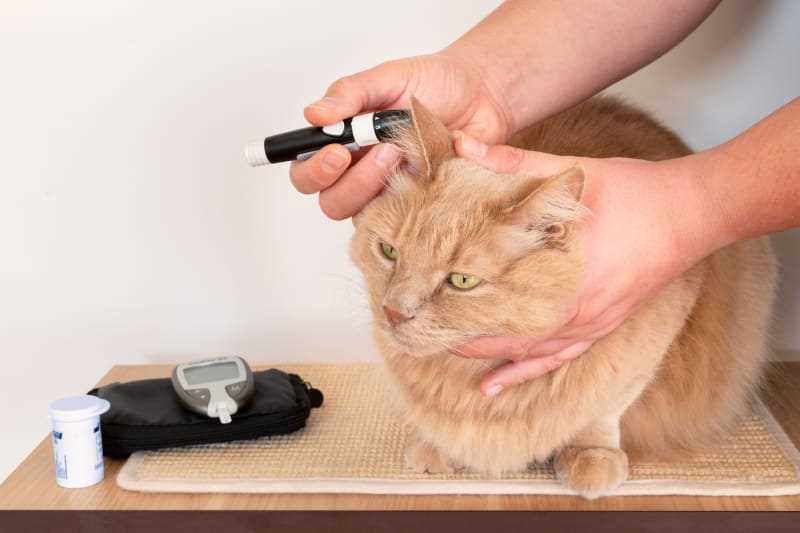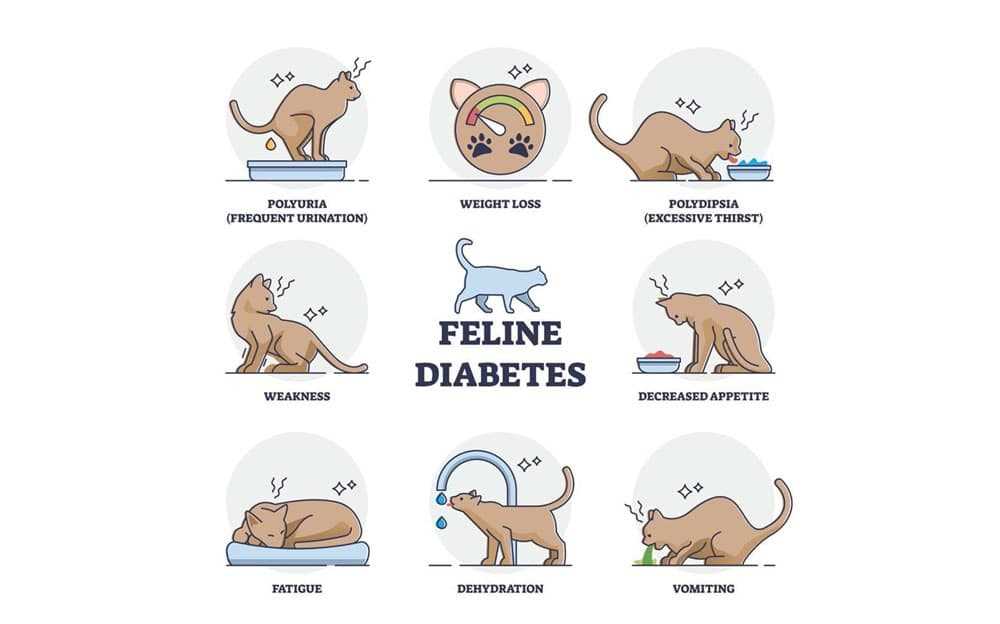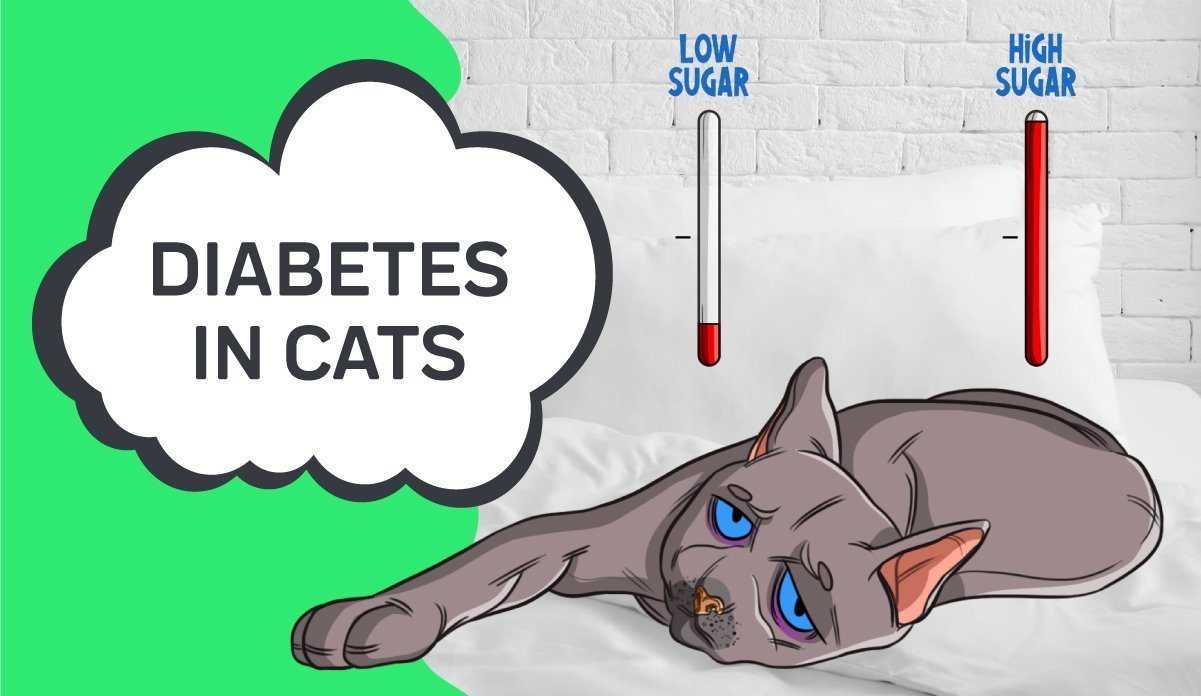Regular monitoring of blood glucose levels is a must for maintaining health in an affected feline. Utilizing a glucometer designed for pets can provide accurate readings, allowing for timely adjustments in diet and insulin administration.
Choosing the right nutritional plan plays a pivotal role. High-protein, low-carbohydrate meals are often recommended, as they help regulate blood sugar levels. Brands offering specialized diabetic formulas can be beneficial, but always consult a veterinarian to tailor the diet to individual needs.
Insulin injections typically become part of the daily routine. Administering the prescribed dosage at consistent intervals ensures stable glucose levels. Learning the correct technique for injections can make the process smoother for both the feline and the caregiver.
Regular exercise is equally important, as it aids in weight management and overall well-being. Engaging in playtime activities can keep energy levels up and promote a healthier lifestyle. Monitoring weight regularly helps in adjusting dietary needs effectively.
Lastly, frequent veterinary check-ups allow for adjustments in treatment plans as necessary. Keeping open communication with the veterinarian ensures that any changes in health status are addressed promptly, providing peace of mind for both the pet and the owner.
Understanding Diabetes Symptoms in Cats
Increased thirst and frequent urination often signal a problem. If I notice drinking more water than usual or using the litter box excessively, it’s time to pay attention. Weight loss despite a good appetite can also be a key sign. If food intake remains unchanged but the body seems to shrink, something isn’t right.
Look for changes in energy levels. If I seem less active or more lethargic than usual, it could indicate an underlying issue. Poor coat condition and excessive grooming, or even neglecting grooming altogether, might also be a red flag. These signs can indicate that something is off and warrant further investigation.
Keep an eye on behavioral changes too. Increased irritability or unusual habits might suggest discomfort or distress. If during playtime, I seem disinterested or reluctant, it’s a signal to observe more closely. Lastly, if there is any sudden change in vision, such as bumping into things or appearing disoriented, a trip to the vet is essential.
Dietary Changes for Diabetic Felines

Switching to a low-carbohydrate diet is essential. High-protein, low-carb foods help maintain stable glucose levels. Look for options with at least 50% protein content and minimal fillers like corn or wheat.
Wet vs. Dry Food

Opt for wet food over dry. Canned varieties usually have fewer carbohydrates and more moisture, aiding hydration and digestion. Always check the label for carbohydrate content, aiming for less than 10%.
Meal Frequency
Feeding smaller, more frequent meals throughout the day supports consistent energy levels. This method can also help regulate blood sugar spikes. Consider implementing a schedule with at least three meals daily, adjusting portion sizes to meet caloric needs.
Monitor weight closely. Maintaining an optimal weight reduces complications and improves overall health. Regular consultations with a veterinarian ensure proper adjustments to diet and nutrition.
Incorporating fiber is beneficial as well. Soluble fiber can slow glucose absorption. Foods with added fiber or supplements can support digestive health while aiding in blood sugar control.
Transitioning to a new diet should be gradual. Sudden changes can cause digestive upset. Mix the new food with the old over a week to ease the transition.
Administering Insulin to Your Feline Friend

Insulin injections should be given at the same times each day, maintaining a consistent routine. Start by gathering all necessary supplies: insulin vial, syringe, and a treat for positive reinforcement.
Steps for Injection
- Wash hands thoroughly to reduce infection risk.
- Prepare the syringe by drawing up the prescribed dose of insulin. Ensure no air bubbles are present.
- Choose an injection site, typically the scruff of the neck or side of the body, where skin is loose.
- Pinch the skin gently to create a fold.
- Insert the needle at a 45-degree angle and push the plunger to administer the medication.
- Withdraw the needle quickly and apply gentle pressure with a cotton ball if necessary.
Aftercare
Offer a treat immediately after the injection to create a positive association. Monitor for any signs of adverse reactions, such as swelling or lethargy. Keeping track of insulin administration times and doses in a log can help in managing overall health.
For a well-rounded home routine, consider enhancing your living space’s functionality. Check out best freestanding dishwashers under 300 to simplify cleaning up after meals.
Monitoring Blood Sugar Levels at Home
Regularly checking blood glucose is critical for managing health. Use a glucometer designed for pets or humans, ensuring it is calibrated accurately. Aim for measurements at the same time daily to identify patterns and fluctuations.
Steps for Blood Sugar Monitoring
1. Gather necessary supplies: glucometer, test strips, alcohol wipes, and cotton balls.
2. Select a suitable site for testing, often the ear or paw pad, where the skin is thin.
3. Clean the area with an alcohol wipe to prevent infection.
4. Prick the skin gently with a lancet pen to draw blood.
5. Touch the blood drop to the test strip and wait for the reading.
Understanding Readings
Consult with a veterinarian regarding target blood sugar levels. Usually, a range of 80-120 mg/dL is optimal. Document results to share with the vet during check-ups, helping adjust dietary or insulin needs. Recognizing trends helps in making adjustments to lifestyle and treatment.
Managing Complications of Diabetes in Cats
Regular veterinary check-ups are crucial for addressing potential complications arising from high blood sugar levels. These assessments help monitor for conditions like urinary tract infections, pancreatitis, and neuropathy, which are common in felines dealing with this metabolic disorder.
Signs of Complications
Be alert for symptoms indicating complications, such as increased thirst and urination, changes in appetite, weight loss, or lethargy. If neurological issues occur, like weakness in the hind legs or difficulty walking, immediate veterinary attention is necessary.
Preventive Measures
Maintaining a consistent feeding schedule and adhering to recommended dietary adjustments significantly aids in management. Regular exercise is also beneficial; engaging in play not only helps regulate weight but can enhance overall well-being.
| Complication | Symptoms | Management |
|---|---|---|
| Urinary Tract Infection | Frequent urination, straining to urinate | Antibiotics as prescribed by a vet |
| Pancreatitis | Vomiting, abdominal pain, lack of appetite | Special diet, fluids, and medication |
| Neuropathy | Weakness in hind legs, difficulty walking | Insulin adjustments, nutritional support |
Choosing the right treats can also impact health. For senior pets, consider options that are low in carbohydrates and high in protein. Check out the best cat treats for senior cats for suitable choices that support well-being without compromising dietary needs.






